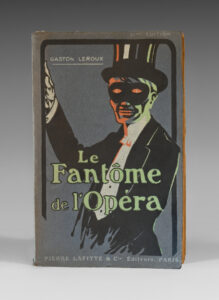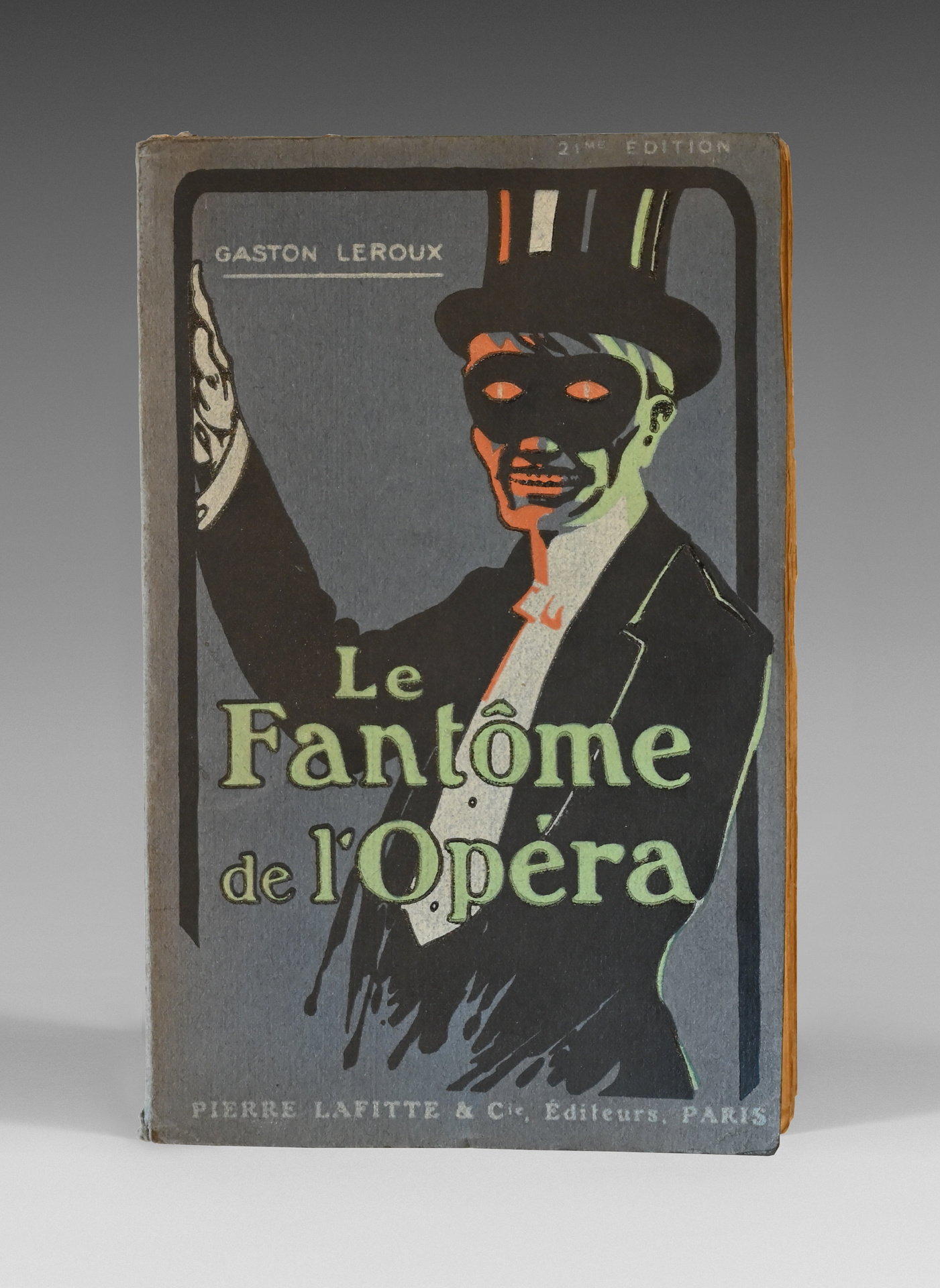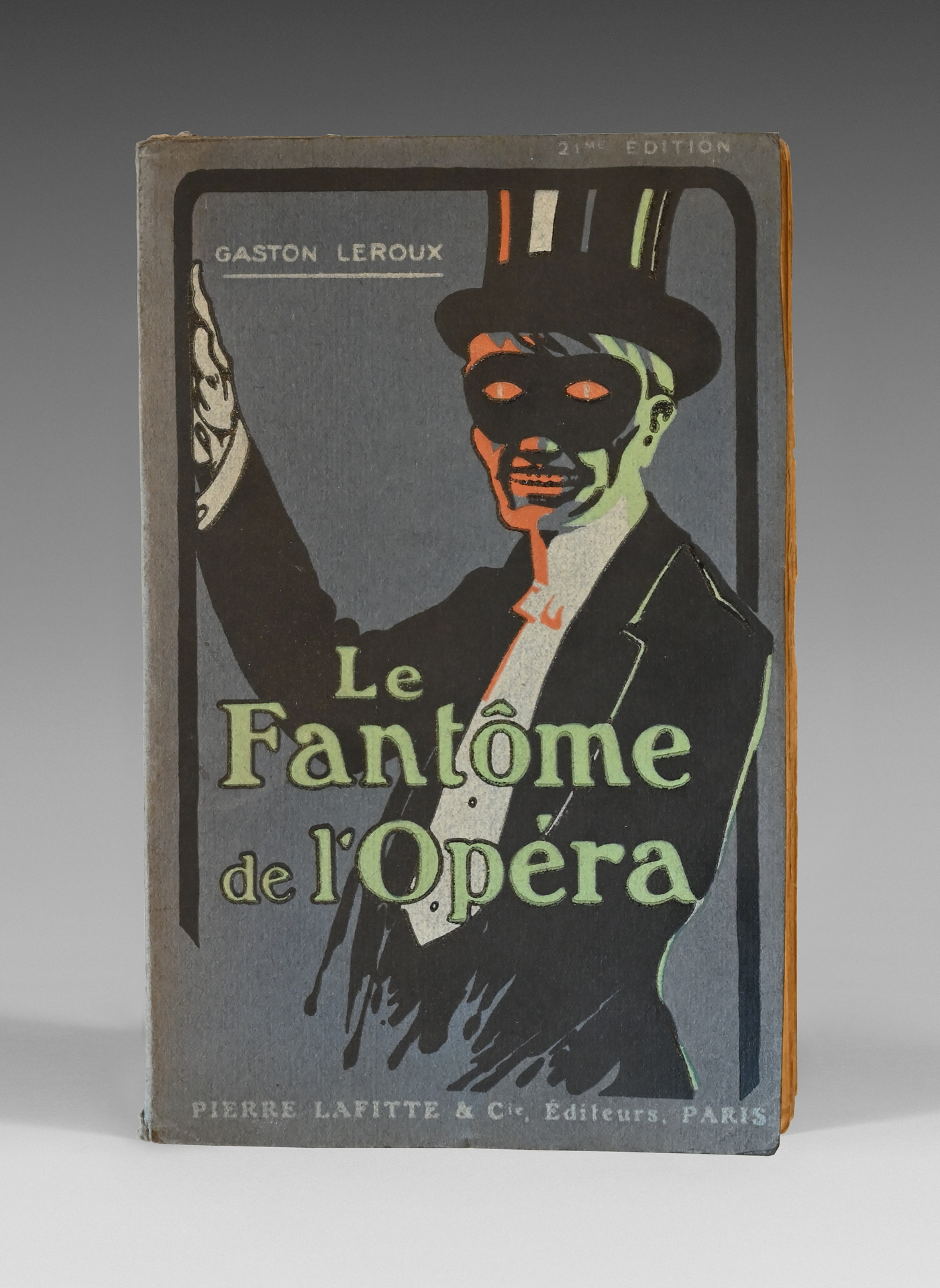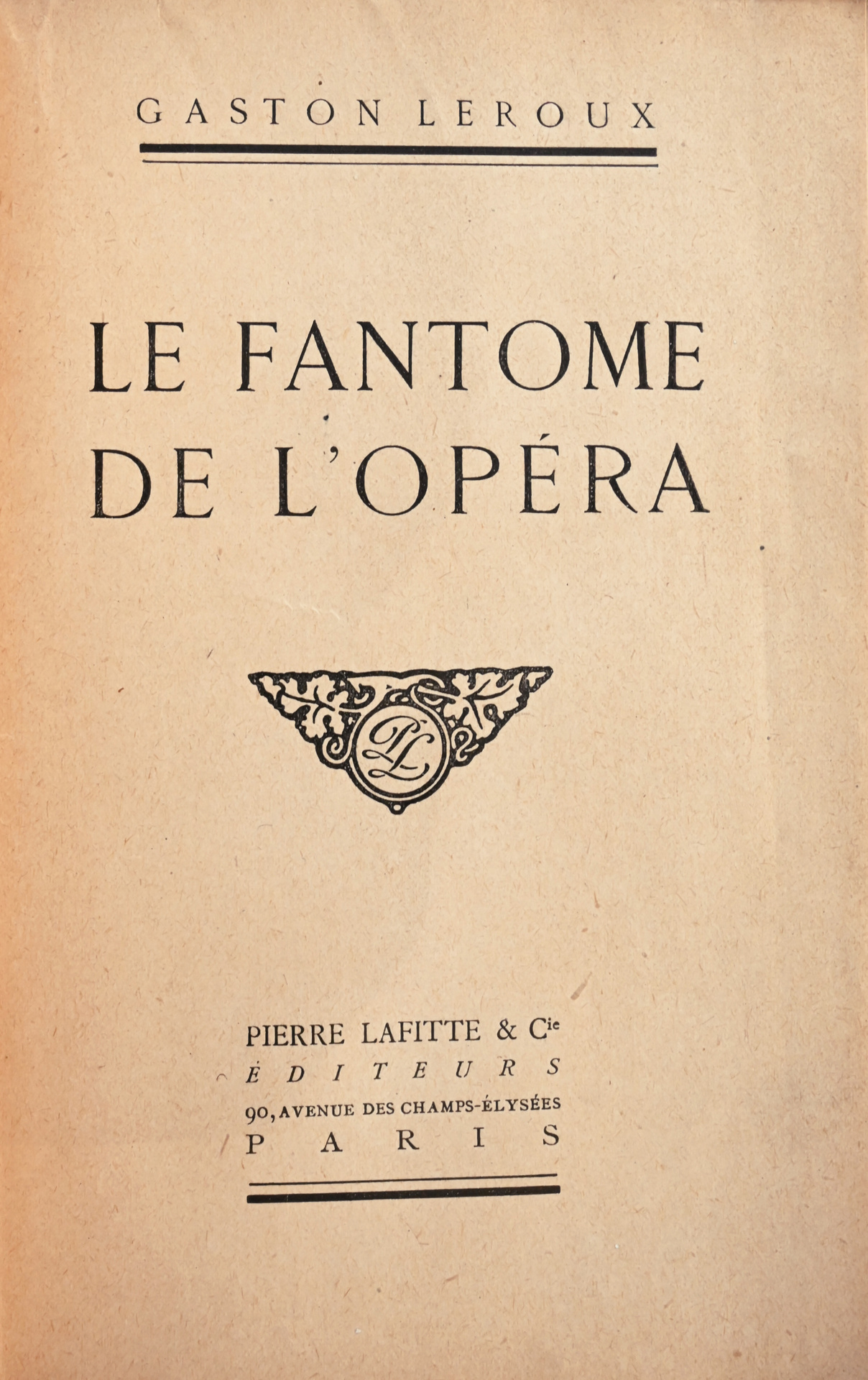Paris, Pierre Lafitte & Cie, 1910.
12mo [189 x 120 mm] of (3) ll. and 520 pp. Preserved in the editor’s wrappers, spine slightly faded, untrimmed. Editor’s wrappers.
Rare first edition of the “Phantom of the Opera”.
Our copy bears the fictitious mention “30th edition” at the back of the half-title.
Before the publication of the first edition, the text was initially published as serial stories in the daily paper Le Gaulois from September 23th, 1909 to January 8th, 110.
Gaston Leroux (1868-1927) is a French writer and a journalist known for his detective novels with a fantasy quality. He undoubtedly took his sources of novelistic inspiration from his professional experiences as a lawyer, a judicial columnist and as a great reporter.
The Phantom of the Opera is an investigation novel varying between fantasy literature and espionage. Inspired from real facts that happened in the Opera Garnier, Gaston Leroux pictures the culprit as a mysterious character pretending to be a ghost and who extends his realm in the seedy parts and undergrounds of the vast Parisian opera.
On December 24th, 1907, a strange ceremony takes place in the opera Garnier’s basements. Alfred Clark, president of the Gramophone French Company, conducts the burying of the recordings of an extract of his catalogue composed of twenty-four records. The records are locked into hermetically sealed urns in order to teach men of the future what the condition of speaking devices was back then, and which progress would have improved this precious invention during the 20th century.
Gaston Leroux wrote in his foreword: “We remember that lately, while digging the basement of the Opera, in order to bury the phonographic voices of artists, the workers’ pick exposed a corpse; and straight away I got the proof that this body was the phantom of the Opera!” (p 12).
Alfred Clark’s wish was that his urns should be opened a hundred years after their burying, which was done in 2007.
The novel that only knew a qualified success when published inspired however many literary, musical and cinematographic works, as well as a multitude of adaptations. Since its first cinematographic version in 1925, it was a brilliant success, and Andrew Lloyd Webber’s famous musical inspired from the novel, which opening night was in September 1986, was the most successful musical in history.
A precious copy of this first literary edition preserved untrimmed in the original wrappers as published.
Only 2 copies have been located amongst French public Institutions: Rennes and the B.n.F.




